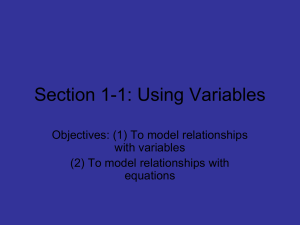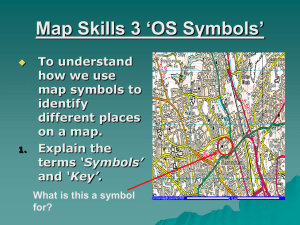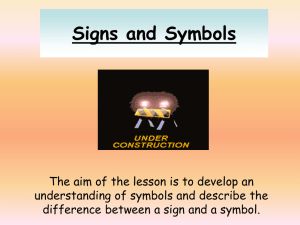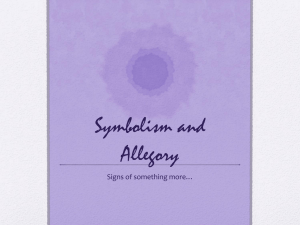Word - Saint Mary`s Press
advertisement
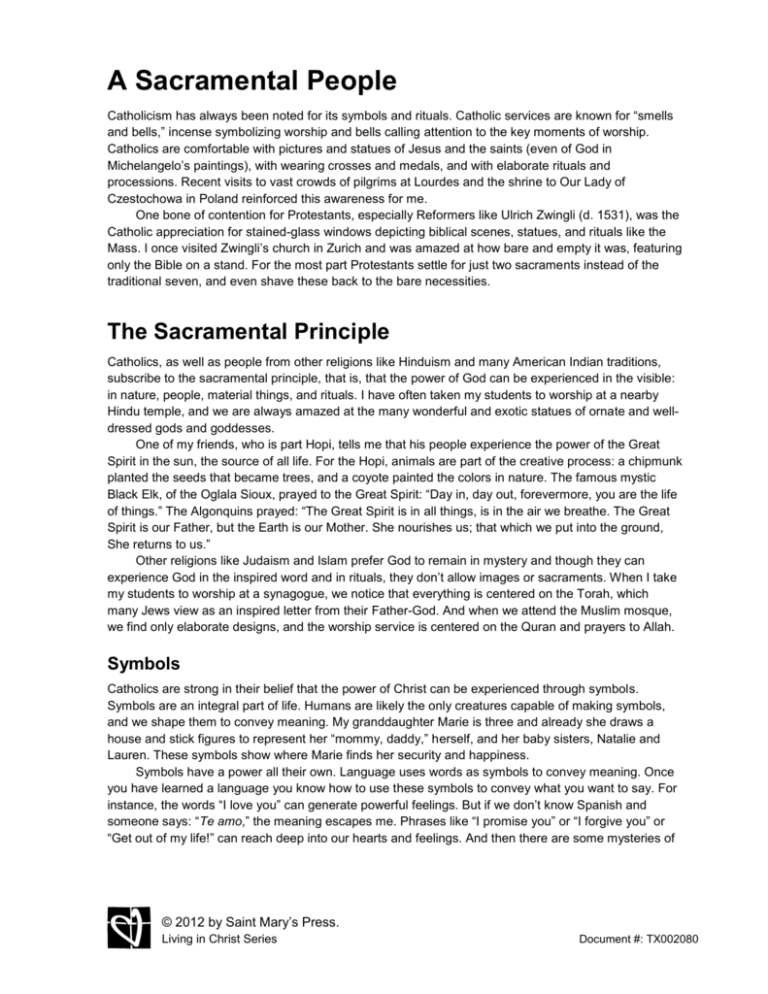
A Sacramental People Catholicism has always been noted for its symbols and rituals. Catholic services are known for “smells and bells,” incense symbolizing worship and bells calling attention to the key moments of worship. Catholics are comfortable with pictures and statues of Jesus and the saints (even of God in Michelangelo’s paintings), with wearing crosses and medals, and with elaborate rituals and processions. Recent visits to vast crowds of pilgrims at Lourdes and the shrine to Our Lady of Czestochowa in Poland reinforced this awareness for me. One bone of contention for Protestants, especially Reformers like Ulrich Zwingli (d. 1531), was the Catholic appreciation for stained-glass windows depicting biblical scenes, statues, and rituals like the Mass. I once visited Zwingli’s church in Zurich and was amazed at how bare and empty it was, featuring only the Bible on a stand. For the most part Protestants settle for just two sacraments instead of the traditional seven, and even shave these back to the bare necessities. The Sacramental Principle Catholics, as well as people from other religions like Hinduism and many American Indian traditions, subscribe to the sacramental principle, that is, that the power of God can be experienced in the visible: in nature, people, material things, and rituals. I have often taken my students to worship at a nearby Hindu temple, and we are always amazed at the many wonderful and exotic statues of ornate and welldressed gods and goddesses. One of my friends, who is part Hopi, tells me that his people experience the power of the Great Spirit in the sun, the source of all life. For the Hopi, animals are part of the creative process: a chipmunk planted the seeds that became trees, and a coyote painted the colors in nature. The famous mystic Black Elk, of the Oglala Sioux, prayed to the Great Spirit: “Day in, day out, forevermore, you are the life of things.” The Algonquins prayed: “The Great Spirit is in all things, is in the air we breathe. The Great Spirit is our Father, but the Earth is our Mother. She nourishes us; that which we put into the ground, She returns to us.” Other religions like Judaism and Islam prefer God to remain in mystery and though they can experience God in the inspired word and in rituals, they don’t allow images or sacraments. When I take my students to worship at a synagogue, we notice that everything is centered on the Torah, which many Jews view as an inspired letter from their Father-God. And when we attend the Muslim mosque, we find only elaborate designs, and the worship service is centered on the Quran and prayers to Allah. Symbols Catholics are strong in their belief that the power of Christ can be experienced through symbols. Symbols are an integral part of life. Humans are likely the only creatures capable of making symbols, and we shape them to convey meaning. My granddaughter Marie is three and already she draws a house and stick figures to represent her “mommy, daddy,” herself, and her baby sisters, Natalie and Lauren. These symbols show where Marie finds her security and happiness. Symbols have a power all their own. Language uses words as symbols to convey meaning. Once you have learned a language you know how to use these symbols to convey what you want to say. For instance, the words “I love you” can generate powerful feelings. But if we don’t know Spanish and someone says: “Te amo,” the meaning escapes me. Phrases like “I promise you” or “I forgive you” or “Get out of my life!” can reach deep into our hearts and feelings. And then there are some mysteries of © 2012 by Saint Mary’s Press. Living in Christ Series Document #: TX002080 A Sacramental People Page | 2 life that are beyond everyday speech and we try to express them in the highly symbolic language of poetry. Gestures are also symbols. A kiss can just say “hello” or perhaps be an invitation to intimacy. A hug can express a greeting, whereas a long embrace can express a more serious relationship. A pat on the back or a high five can make us feel proud of our achievements. And, of course, people can be symbolic. A medic arriving at an accident is a powerful symbol of rescue; a firefighter pulling up to a burning home symbolizes safety. A friend who shows up when we are in the hospital symbolizes love and concern. Symbols have the power to draw us into the mysteries of life and reality. At one time the World Trade Center stood for the power of business and commerce in the United States. Then it was attacked on 9-11 in 2001 and for some time it stood for terror, vulnerability, and human loss. Now the open space where it once stood draws many into memories of loved ones lost, questions about why some people hate us so much, and fears that other catastrophes lie ahead. On a recent trip to Poland, I observed piles of rubble that drew me into the horrors of the Holocaust. These were the ruins of the crematoria and gas chambers in Auschwitz, which were blown up by the German Nazis in an attempt to cover up their atrocities. They were just piles of bricks, but extremely powerful symbols of the mystery of evil and human cruelty. They are symbols of the hatred that drove human beings to destroy millions of innocent lives with industrial efficiency. In a room there, one sees countless shoes of the victims, taken off just before they entered the gas chambers. Among these are many baby shoes and shoes of toddlers, as well as artificial limbs and canes! The meaning of all this, I must say, was beyond my comprehension, and to this day I am haunted by the experience of these symbols of death and destruction. Sounds are also used as symbols to draw us into mystery. Recently I attended the burial of a marine killed in Iraq, the fiancée of one of my students. When Taps was played, I was drawn into the mystery of a life cut short, the grief of a lovely undergraduate, and experienced feelings of loss, patriotism, heroism, and the futility of war. I will never forget a similar ceremony when Taps was played at the cemetery near the beaches of Normandy. There were ten thousand white markers on the graves of those who died in the 1945 invasion, which ended World War II. I was overwhelmed at the sight of the loss of so many young Americans and yet was inspired by their heroism and self-sacrifice. I can remember another sound, that of a siren, as we rushed a friend of mine off to a hospital for emergency surgery. Often when I hear a siren now, I am brought back to that experience and reminded of the anxiety, compassion for my friend, and fear that he wouldn’t make it. And we have our symbolic rituals. A dance can be a celebration of joy at a wedding or intimacy on an evening out. Thanksgiving dinner is a symbolic meal that can draw a family closer and provide a special time to share memories, greetings of “what’s going on,” and to welcome new young members with hugs. We surround ourselves with powerful symbols, engagement and wedding rings, flags, photos, souvenirs, songs, all of which can have the power to conjure memories and put us in touch with deep feelings. How many of us wear something around our necks or on our fingers that are treasured symbols of loved ones past and present. The song laments, “You don’t bring me flowers anymore.” The symbols of love are gone and so seems to be the love itself. It is interesting to note that the word symbol comes from the Greek word syn-ballien, which means “to put together.” It comes from the ancient Greek practice of making contract or covenant. Each person in the agreement was given a piece of the same object. At any given time they could reconvene and match their pieces to show that each was a part of the original deal. The same applies to our use of symbols today. For a symbol to be effective, there has to be an agreed-upon meaning shared by the participants. Picture a couple celebrating their fiftieth anniversary together at their favorite restaurant. © 2012 by Saint Mary’s Press. Living in Christ Series Document #: TX002080 A Sacramental People Page | 3 They hold hands across the table and the husband gently fingers his wife’s diamond wedding ring. The symbolic ring puts them in touch with the mysteries of their lives together: the love, the struggles, the child raising. The ring has the power to draw them into fifty years of sharing in the covenant they began so many years ago and also gives them hope for more years ahead. Sacraments, as we shall see, are similar: they are powerful and yet unique symbols that link us with the power of God and with our covenant with others. Sacraments are about communication with God and others. Sacraments are about community with God and others. And these profound and powerful symbols are concerned with propelling us into a way of life and action for others. Religious Symbols It has been said that we humans are religious by nature, that is, that religion has always been part of human culture. Studies in anthropology seem to bear this out. The root in the word religion is religare, which means “to be tied into.” Humans have always been tied into the mysteries of the sacred, into the ultimate, in many cases into relationship with divine beings, or if you will, gods. As far as we know, people have always used symbols as a way to connect with the divine, to enter into the power of the gods. High in the Swiss Alps, altars and animal remains that date back to 180,000 BCE have been found in caves, suggesting that sacrifices were made in thanksgiving to the god of the hunt. Similarly there are thirty-thousand-year-old drawings in caves in France that suggest rites were performed to the “master of animals” to ensure animal fertility and hunting success. The Masai, an ancient tribe that still dwells in East Africa, perform dances and processions to their god, whom they believe is manifested in the rain, the lush grasslands, and the lion. They make long pilgrimages, fasting along the way, to commune with the red god that they believe dwells in a volcano called Oldongo L’Engai. Today mosques, temples, churches, and shrines abound around the world, and countless religious symbols, including the crescent, the Star of David, and crosses, are used by a broad diversity of religions. Jewish Symbols Jesus, as we know, was Jewish, and his movement began as a reform of Judaism, so Jewish symbols are a part of the Christian system of symbols. For instance, the Jewish menorah, the candelabrum symbolizing that Israel is to be “the light unto nations,” finds its counterpart in Christianity in the altar candles symbolizing that Jesus is the “the light of the world.” Shabbat, the Jewish day of rest and worship, is parallel to the Christian Sunday. The Passover Seder supper commemorating the saving of the Jewish people from slavery in Egypt finds its counterpart in the Mass in memory of the saving power of the cross. One of the oldest images of Jesus is that of the good shepherd, which ties his gospel image to that of the shepherd who became King David. There are many symbols in the Hebrew Bible that are significant to Christians: the garden of Paradise, the tree of knowledge, the eating of the forbidden fruit, the snake; Noah’s ark, the flood, the dove and the rainbow; the burning bush, the commandment tablets, the manna in the desert, the pillar of smoke; the temple with its altar, tabernacle, and the scroll containing the inspired Word of God. These were all Jewish symbols that drew the chosen people into the mysteries of their covenant with their god, into the mysteries of the creator and savior. These symbols eventually became part and parcel of the community that followed Jesus and were used to experience the power of the risen Jesus in their midst. (This article is excerpted from The Ongoing Renewal of Catholicism, by Brennan R. Hill [Winona, MN: Anselm Academic, 2008]. Copyright © 2008 by Brennan R. Hill. Used with permission of Anselm Academic.) © 2012 by Saint Mary’s Press. Living in Christ Series Document #: TX002080


